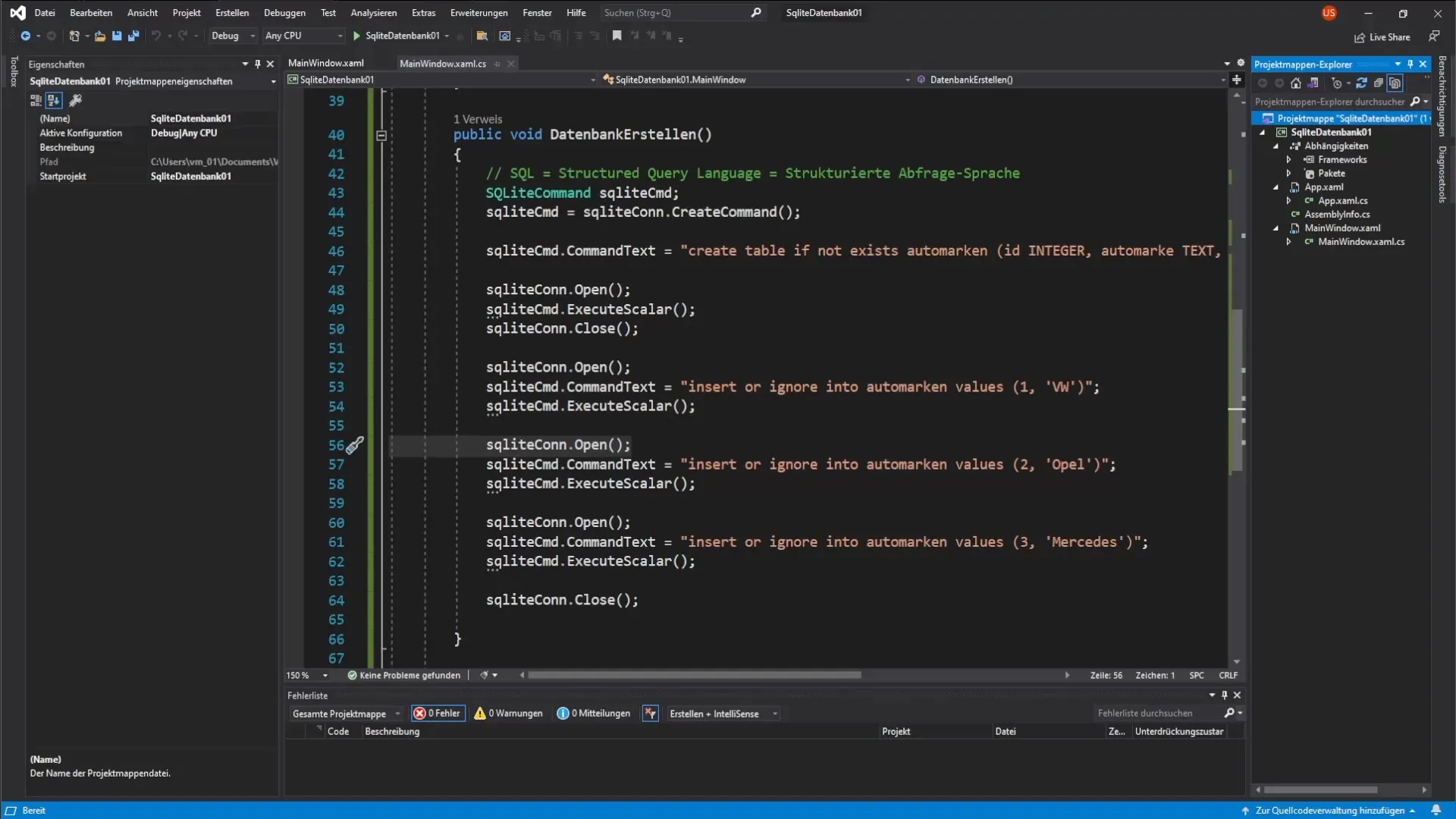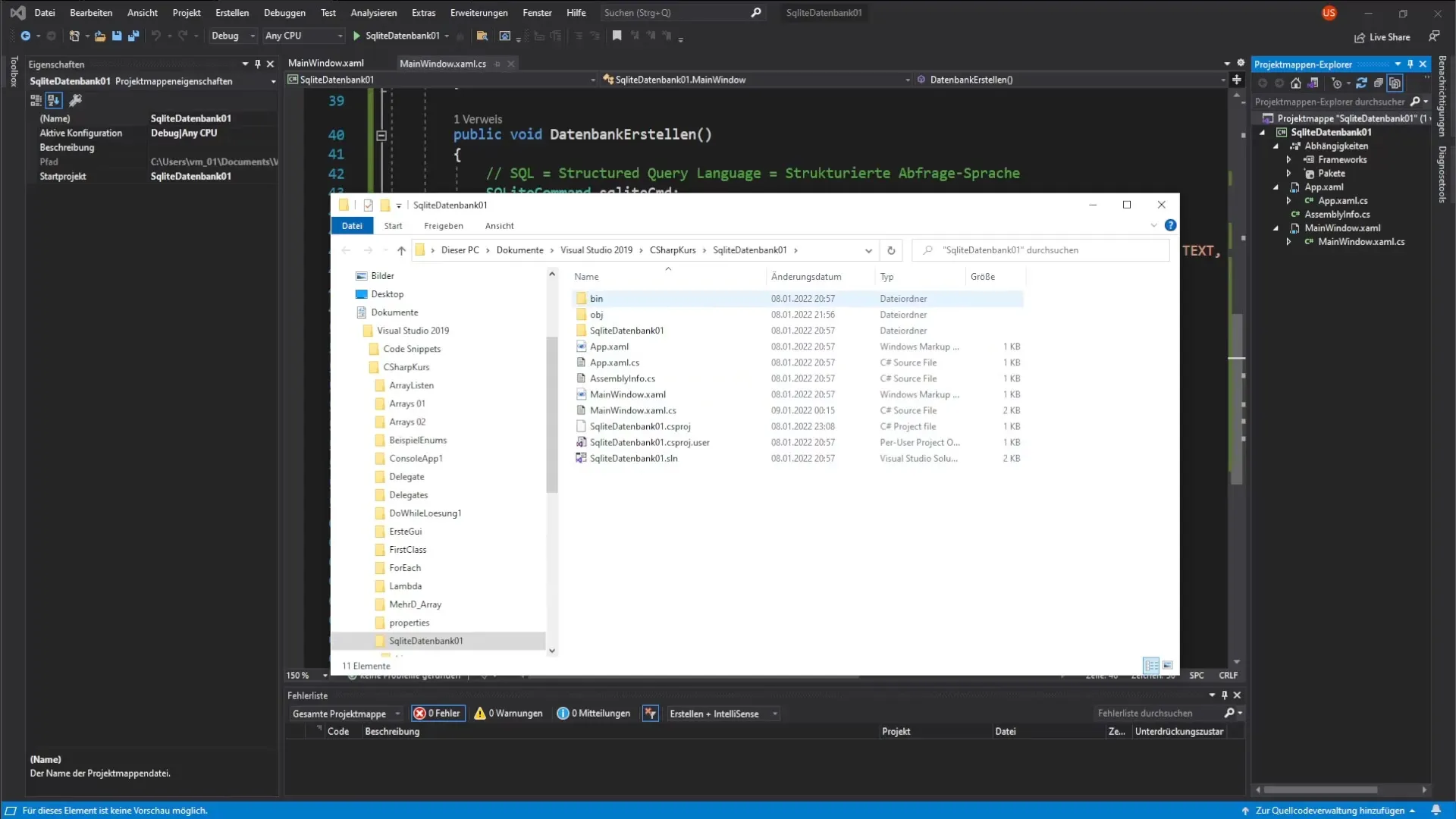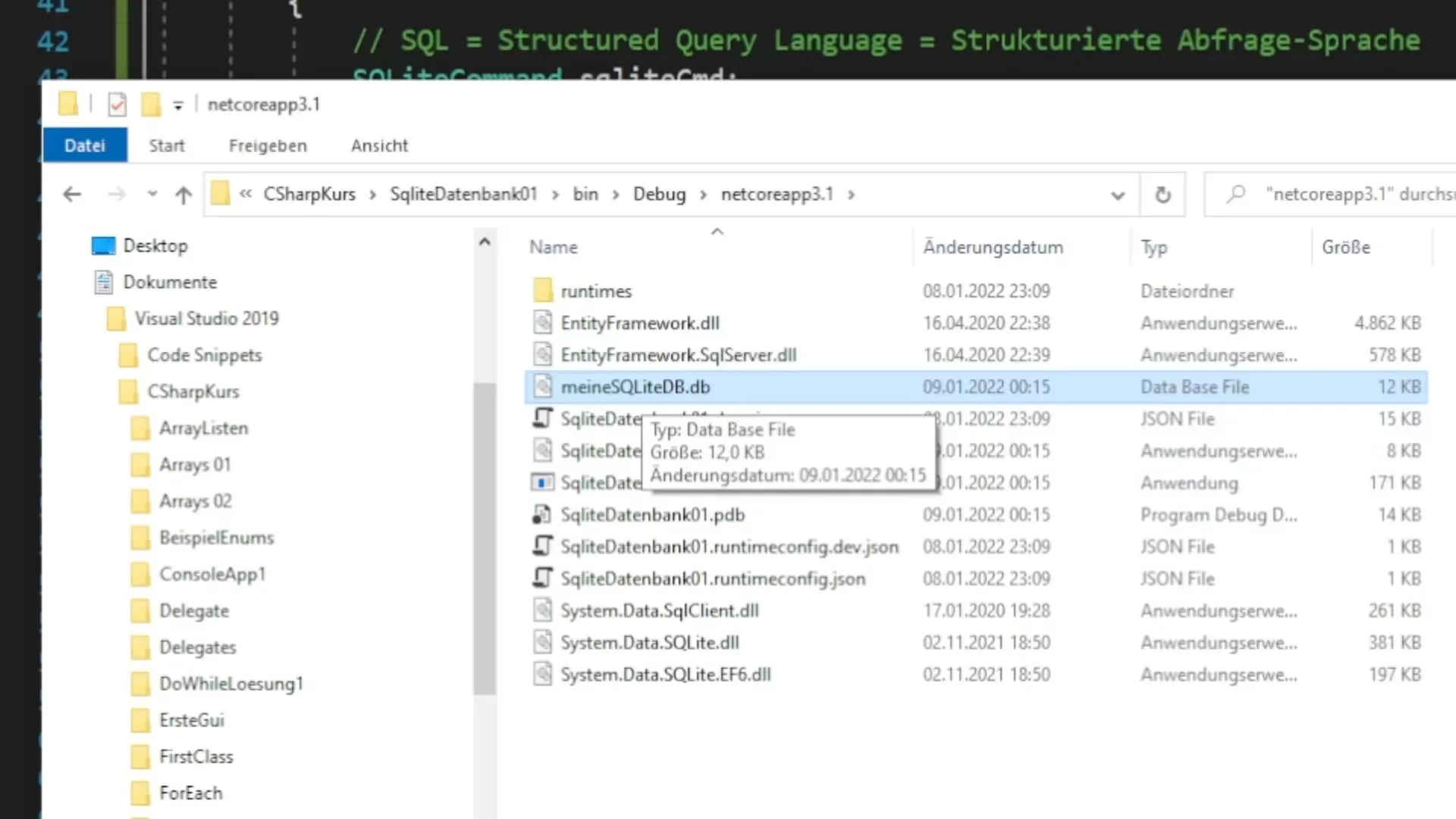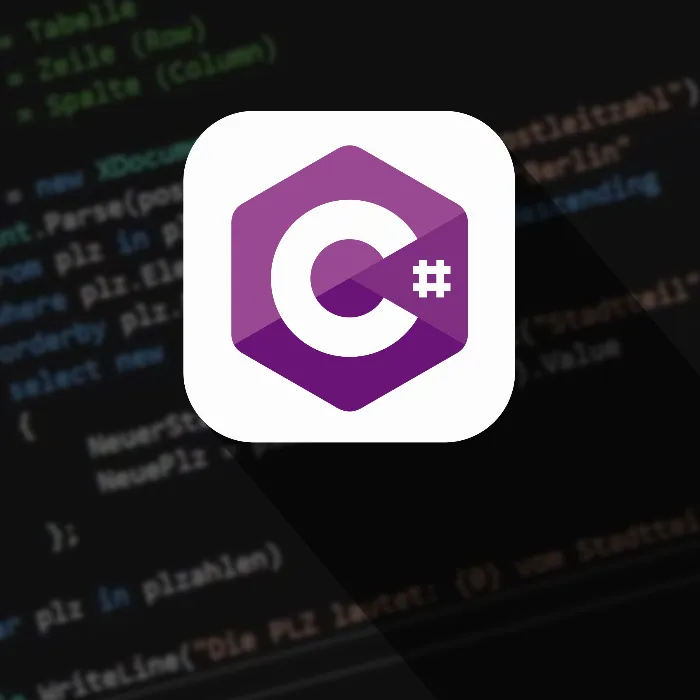You have decided to use the DB Browser for SQLite databases. This powerful tool allows you to manage SQLite databases efficiently, browse data, and make changes without having to constantly switch between the program and Visual Studio.
Main insights
- The connection to SQLite is established through a specific method and is crucial for your database to function.
- The DB Browser allows you to open the database and view and edit the created tables and their data.
- Changes to the database contents can be made directly in the DB Browser, but are often performed in the programming environment like C#.
Step-by-step guide
1. Make preparations
Before you can work with the DB Browser, make sure that your SQLite database project is set up correctly. In the first step, you can open the program information window with the main window of your application. Here it is confirmed that you successfully establish the connection to the SQLite database.

2. Set up SQLite connection correctly
Make sure to use the command element SQLiteConnection.Open only once. It is important to remove any previously created lines that call this connection multiple times to avoid errors. These small adjustments are key for a smooth start to your DB management.
3. Start the program
After setting up the connection, you can start the program. You will notice that the program runs through the established commands and thus builds the connection to the database. Subsequently, the database will be created in the background and a table will be set up.

4. Check the database in the file explorer
Once the program has created the database, you can confirm the successful creation of the database in the file explorer. To do this, right-click on the solution explorer and select "Open folder in file explorer."

5. Open the database with the DB Browser
To open the newly created SQLite database, right-click on your database file. In the next step, select "Open with" and then choose the DB Browser for SQLite from the list of available apps.

6. Check data in the DB Browser view
Once the DB Browser is opened, you can find the created table "Car Brands." Click on the table and navigate to "Browse Data" to review the contents. The values you programmed earlier are now visibly stored in the database.

7. Edit data (optional)
Although you can theoretically make changes to the data directly in the DB Browser, it is advisable in many cases to make the corresponding modifications in the C# program. This way you maintain the clarity and structure of your code.
8. Procedure for data editing in the C# project
If you want to make changes later via a graphical user interface (GUI), plan to work with WPF. It provides you with a user-friendly interface through which you can add, change, or delete data.
Summary - Using DB Browser for SQLite databases: A step-by-step guide
In this guide, you have learned how to use the tool DB Browser for SQLite databases effectively. From setting up the connection to checking the database and editing options – you are now well prepared to manage your database effectively.
Frequently asked questions
How do I establish a connection to the SQLite database?You can establish the connection using SQLiteConnection.Open, be sure to use this command only once.
How do I open the created database with the DB Browser?Right-click on the database file and select "Open with," then choose the DB Browser for SQLite.
Can I also edit data directly in the DB Browser?Yes, you can edit data directly in the DB Browser, but it is advisable to make these changes in the C# program.
How do I load new data into the database?Use your C# program to load or modify new data in the SQLite database.
What is the advantage of WPF for the GUI?WPF provides you with a user-friendly interface and allows you to easily manage data and make changes.


